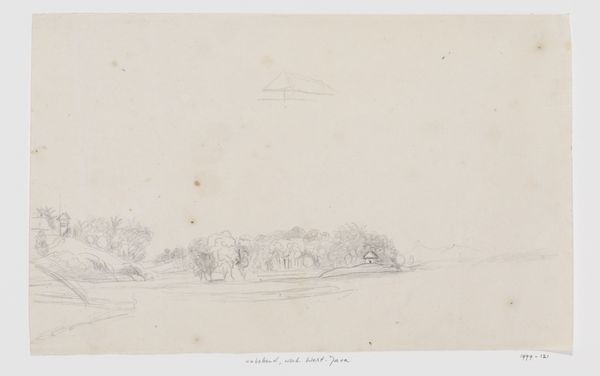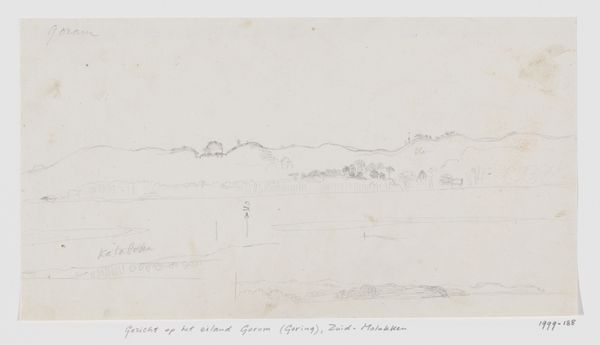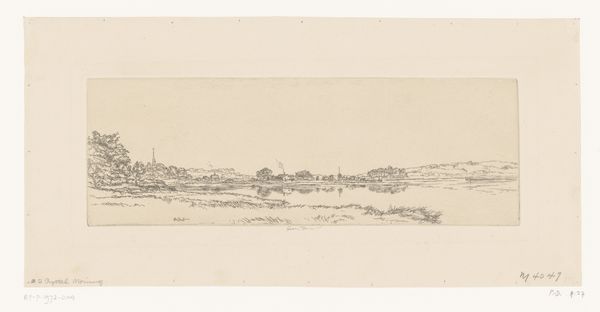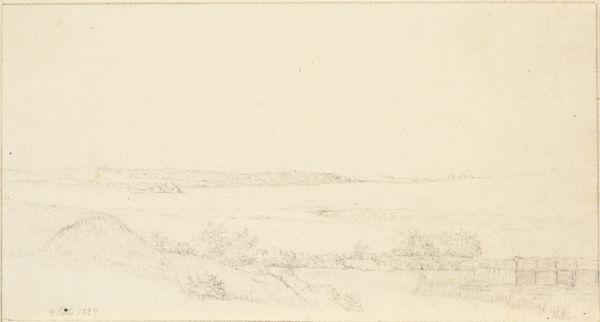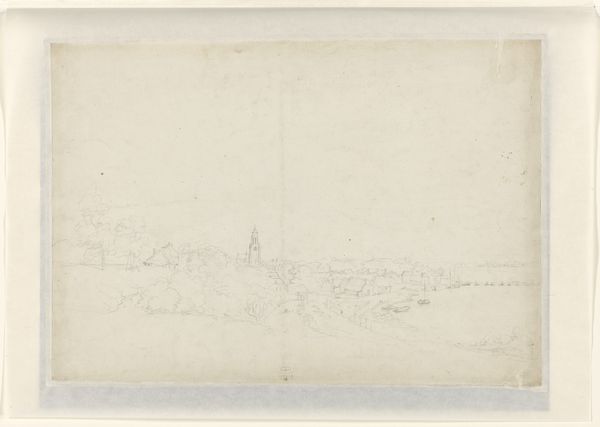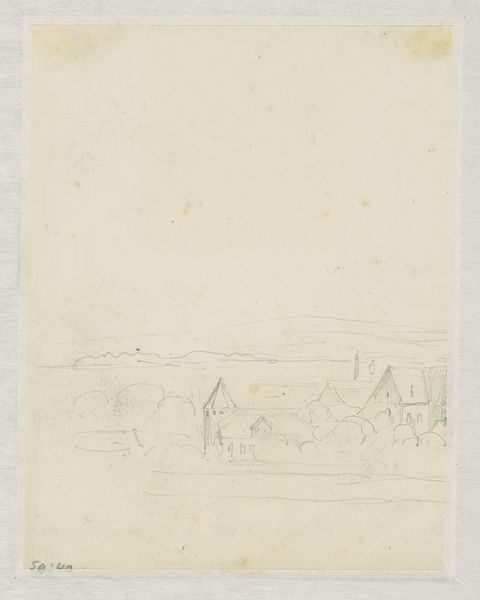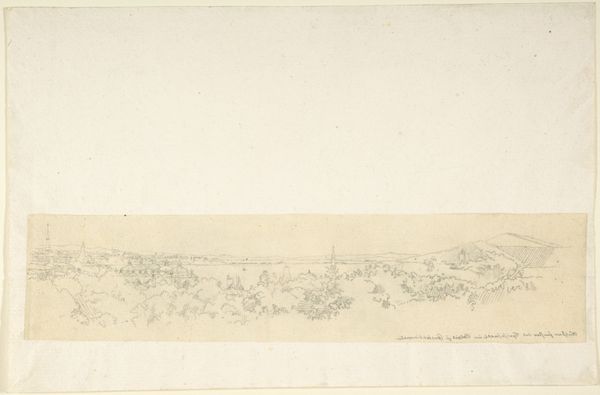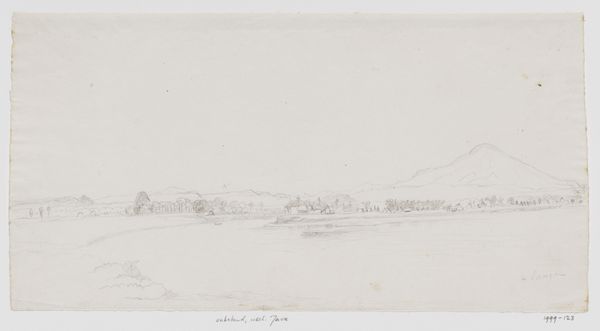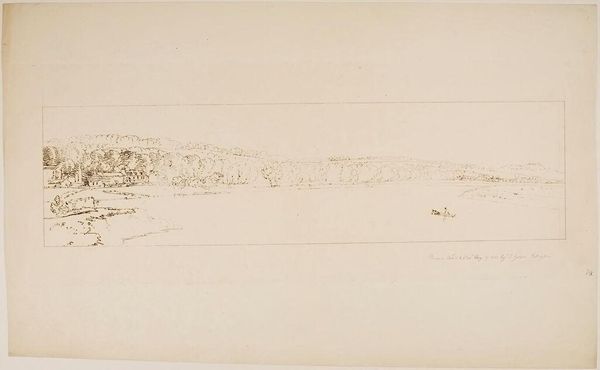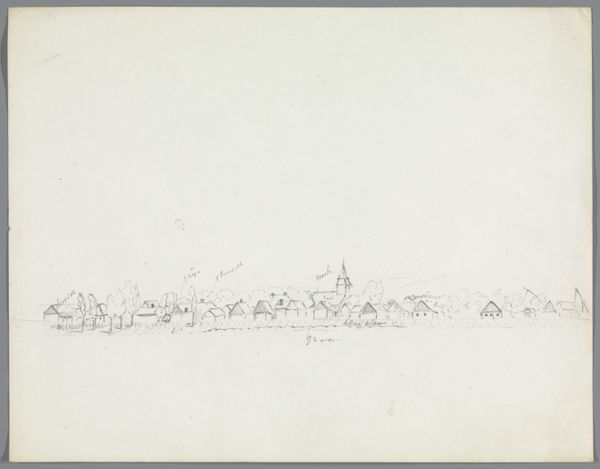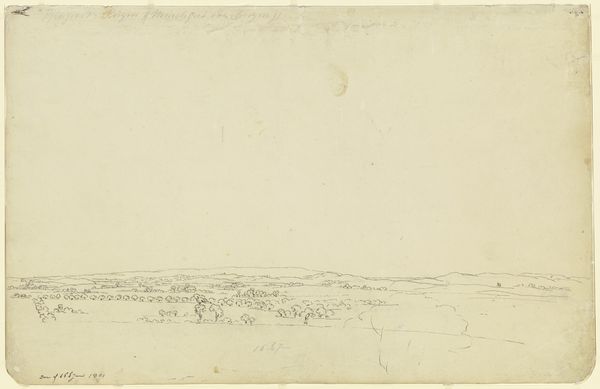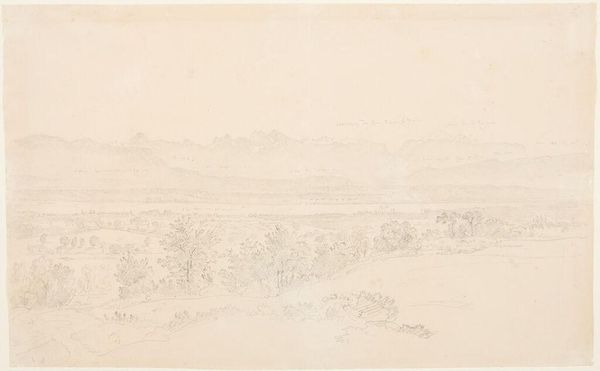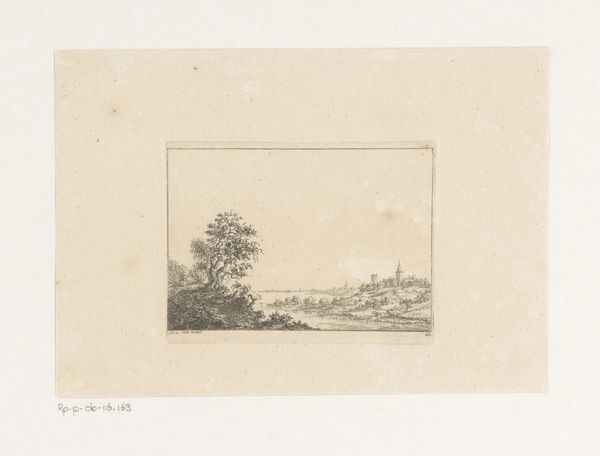
drawing, pencil
#
drawing
#
landscape
#
romanticism
#
pencil
#
cityscape
#
realism
Dimensions: height 181 mm, width 405 mm
Copyright: Rijks Museum: Open Domain
Editor: This pencil drawing, "Gezicht op Kupang vanuit de zee, Timor" made in 1821 by Adrianus Johannes Bik, captures Kupang from the sea. There's a tranquil stillness to it. It almost feels like peering into a faded memory. What historical context illuminates this scene? Curator: Indeed, the stillness masks a period of intense colonial activity. The Dutch presence in Kupang, Timor, in the early 19th century wasn't simply about trade. It was a strategic foothold in the spice trade routes and a manifestation of expanding Dutch imperial power. How might that colonial presence influence our perception? Editor: So the picturesque landscape belies a narrative of political and economic control. Does the drawing subtly portray any aspects of this control, or is it intentionally absent? Curator: Consider the very act of depiction. Bik, a European artist, is visually "possessing" this landscape. The "Gezicht" or "View" suggests a European perspective imposed on the Timorese environment. The Dutch used images like this to catalog, study, and in some ways claim dominion over, their colonies. Where do you see the artistic interpretation serving colonial power? Editor: It’s almost too neutral, focusing on a clean, unobstructed view. Knowing its purpose changes everything! Were such works intended to inspire pride back in the Netherlands, presenting colonization as civilizing and benign? Curator: Precisely! The image becomes part of a larger visual rhetoric used to justify colonial expansion. The very simplicity you observed could be interpreted as the artist imposing order and rationality on an “untamed” land, in service of this political justification. Does thinking of the art in those terms alter how you interpret it? Editor: Absolutely. What initially felt like an innocent landscape now reads as a document intertwined with a complex and often brutal history. I will certainly approach such historical art with renewed critical interest moving forward. Curator: And that is the important take-away of all history, learning informs the future.
Comments
No comments
Be the first to comment and join the conversation on the ultimate creative platform.
